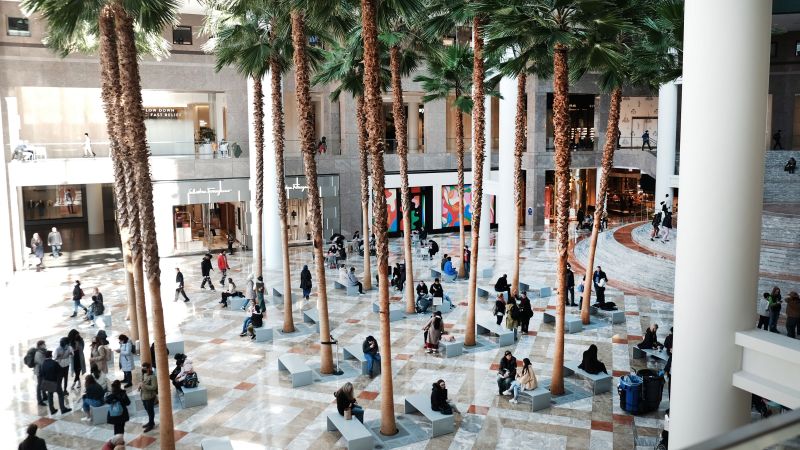Retail experts have long sounded the alarm on malls in the US.
But malls are not going extinct, they are merely adapting to a new environment. In fact, many have reported robust occupancy levels and bigger crowds than before the pandemic, according to a recent market analysis from Coresight Research.



A walkable city, but with no housing and surrounded by acres and acres of parking.
Yeah, I understand that it isn’t a walkable city. But the inside shows why we should work towards walkable cities.
I’d also stipulate there is at least one way walkable cities should be more like malls. Everyone wants to get rid of cars , for good reason, but what about everyone else? Good walkable cities still need to provide better ways for someone to drive to the city and leave their car.
We’d all benefit from more park-n-rides surrounding a town center, more long term parking. Let’s welcome people not yet ready to give up their cars, the opportunity to give them up part time
Good walkable cities should have appropriate rural transport so you don’t need to drive into town and can take a five dollar train ride with no traffic instead that includes return fare and takes you right to main destination districts.
Seattles ferry network, for example.
Seattle ferries:
That’s interesting! I hadn’t thought about that, but it’s a good point.
When I lived in L.A., we would drive to the train station all the time if we were doing something like going downtown. It was too far to walk to the station, but there was parking and the train was convenient. So I absolutely agree with you.
The mall closest to me has started to build a TON of apartments around, and attached, to the mall.
Its starting to look appealing, and that mall is always buzzing.
Its like they figured out people don’t want to drive, then walk. They just want to walk.
A lot of malls I can think of (in both my current and previous city) do have tons of housing around them (though admittedly they also tend to waste a ton of space on parking). Some are admittedly a mixed bag. My parents live near a mall that is surrounded by a giant suburb and not that many medium density apartments. Though the biggest mall in that city is downtown and is positively surrounded by high density housing. Another reaaaally big mall is in a street that frankly is terrible for walking despite being full of businesses (it’s a really long, low density street), but the entire back side of the mall is residences and lots of medium density at that.
In my current city, one of the biggest malls is kinda similar to that. It’s got mostly detached housing near it. But it’s directly on our LRT and that makes it super accessible for probably the majority of high density housing residents, which counts as walkable in my book. A significant number of people can get there in 10-20 minutes by convenient and frequent public transit. The other big mall is also on the LRT but the other side of the city. It’s got much more housing near by, including a large amount of high density apartments. There’s also a smaller mall more in the middle that is just surrounded by high density apartments. That mall has been hit really hard by COVID, but at least the street it’s on is full of life. It doesn’t make for traditional mall experiences (e.g., no food court), but it’s still a super walkable area, regularly hosts mini festivals outside, and is also on the LRT route.
As I type this, I think it really drives home that LRTs and subways are utterly critical for walkable cities. Literally all the malls I’ve mentioned are major transit hubs (which makes them great to live near if you want to take transit), but buses relatively suck compared to LRT/subway. The ability to just head to a station without having to know the schedule is extremely convenient and the frequency also just makes it more viable to get to the mall quickly. I’ve used public transit for years in both cities (and to get to all the mentioned malls), but the best experiences are definitely with the LRT. The LRT also makes high density housing a lot more sensical, since being close to the LRT stations is extremely convenient and high density housing is the most scalable way to achieve that.